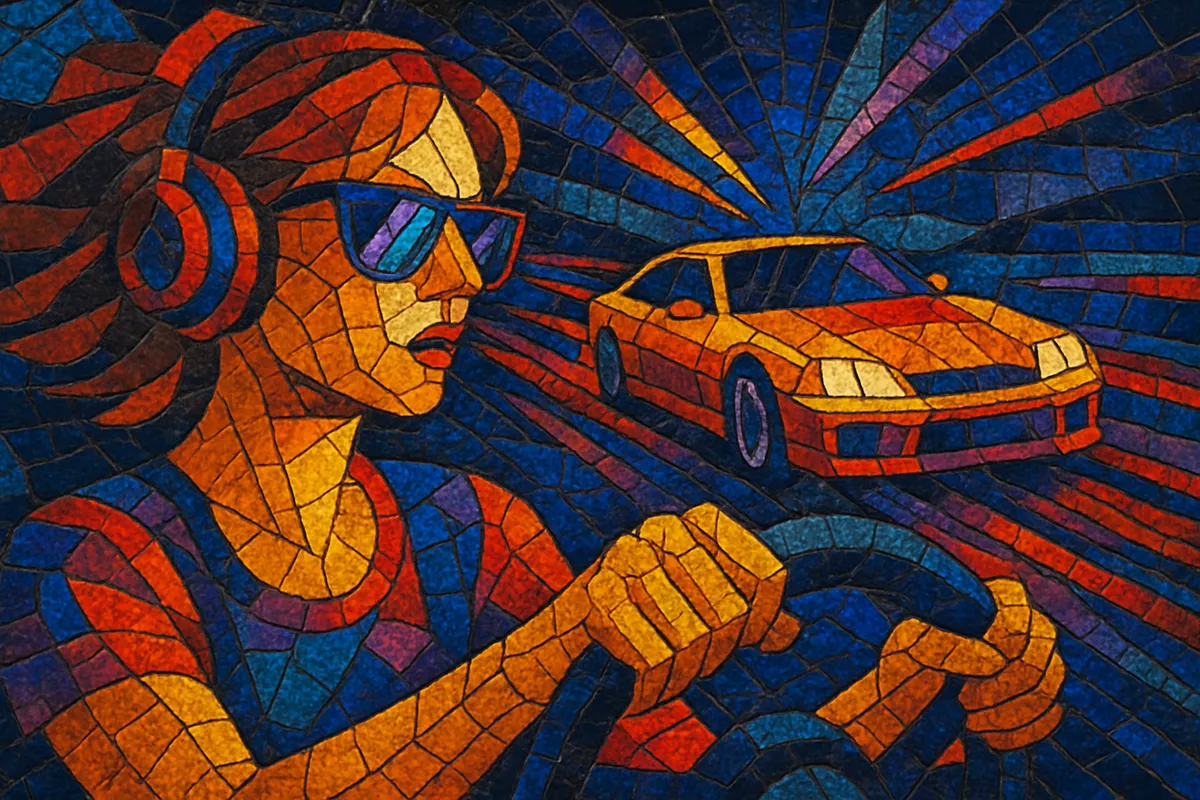Eurobeat is a high-tempo, hook-driven form of European dance music that emerged in Italy in the late 1980s and was developed primarily for the Japanese market in the 1990s. It is characterized by four-on-the-floor rhythms around 150–160 BPM, bright supersaw leads, dramatic chord progressions in minor keys, and anthemic, often English-language choruses.
Unlike Eurodance, Eurobeat leans heavily on Italo-disco and Hi-NRG aesthetics, with dense layers of synths, punchy drum programming, and soaring toplines sung by a roster of Italian session vocalists under multiple aliases. The style became tightly linked to Japan through the long-running Super Eurobeat compilations, Para Para club culture, and pop-cultural placements (notably the Initial D franchise).
Eurobeat grew out of late-period Italo-disco and Hi-NRG production that was thriving in Italy. Producers and vocalists—often releasing tracks under multiple aliases—refined a faster, more maximal sound: big minor-key choruses, bright synth brass and strings, and relentless four-on-the-floor drums. Labels such as A-Beat C, Time Records, and later Delta and SCP helped codify the sound.
In the early 1990s, the style found an especially receptive audience in Japan. Avex Trax launched the Super Eurobeat compilation series in 1994, creating a steady pipeline of Italian-made tracks tailored to Japanese club culture and Para Para choreography. The genre’s identity became intertwined with Japan’s dance scenes, arcade culture, and anime/manga fandoms.
Eurobeat reached widespread recognition through songs that became staples of club floors and media placements—many later associated with the Initial D soundtrack era. Artists such as Dave Rodgers, Domino, Mega NRG Man, Ace, Fastway, and Manuel provided a steady stream of high-energy singles with memorable hooks, brisk tempos, and dramatic key changes.
Online communities and meme culture gave Eurobeat renewed visibility, with tracks like “Running in the 90’s,” “Deja Vu,” and “Gas Gas Gas” circulating widely. While still niche, the scene remains active via compilations, new productions by veteran and emerging artists, and cross-pollination with Japanese club styles (e.g., Hyper Techno, buchiage trance). The genre’s DNA—fast BPMs, supersaw stacks, and heroic choruses—continues to influence dance-pop and J-pop remixes.


